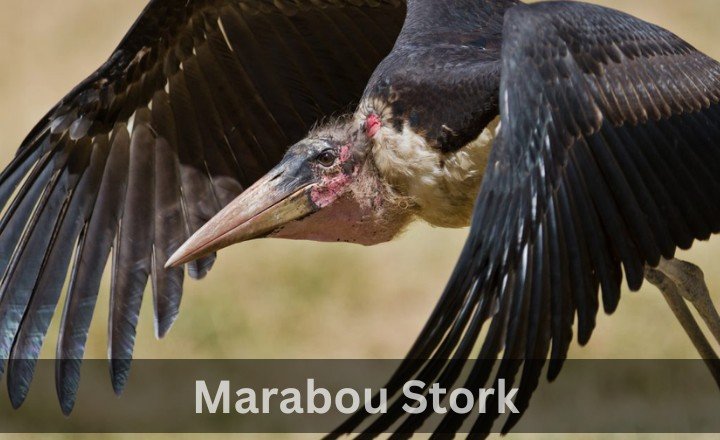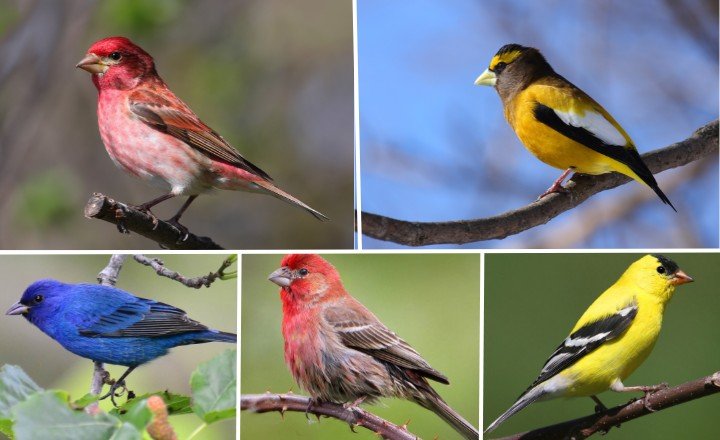6 Ugliest Birds in the World (With Pictures)
As a birdwatching enthusiast, I’ve spent countless hours marveling at our feathered friends’ vibrant plumage and graceful silhouettes. Amidst the dazzling colors and melodic songs, an astonishing world of avian oddities often goes unnoticed by the ugliest birds in the world. While many might turn up their noses at these peculiar creatures, I find a certain charm in their unconventional appearances. From scraggly feathers to bewildering beaks, these birds challenge our traditional notions of beauty and remind us that nature thrives in all its quirky forms.
In my quest to explore the farthest reaches of the globe for unique birdwatching experiences, I’ve encountered some truly unforgettable characters that would make even the most seasoned ornithologist do a double-take. In this article, we will be looking at some of the birds that we would want to forget.
California Condor
The California Condor, once teetering on the brink of extinction, embodies a success story in conservation efforts. It is a Black Bird with a wingspan reaching nearly ten feet, these majestic birds are not only the largest flying land birds in North America but also fascinating symbols of ecological resilience. Their remarkable recovery from just 27 individuals in the 1980s to over 500 today showcases the power of dedicated conservation strategies, such as captive breeding and habitat restoration.

Recent studies have shed light on their complex social structures and surprising behaviors that challenge conventional wisdom about bird intelligence. Unlike many other species that engage primarily in solitary lives or small nesting groups, California Condors exhibit intricate social interactions that include cooperative breeding practices and strong familial bonds.
King Vulture
The King Vulture is a striking White Bird adorned with splashes of vibrant colors, that stands out in the avian world for its unique role in the ecosystem. Unlike many birds of prey that rely on hunting live animals, this scavenger feeds primarily on carrion, showcasing nature’s intricate balance between life and death. Its keen eyesight allows it to spot decaying remains from great distances, while its impressive size often reaching wingspans of up to six feet proclaims its dominance among other scavengers like vultures and condors.

The King Vulture’s striking appearance is not just for show; it plays a crucial part in its survival. The contrasting hues of orange-yellow skin around its head and neck serve as a signal to other scavengers that a meal has been discovered.
Indian Grey Hornbill
The Indian Grey Hornbill is known for its striking appearance and distinctive calls, it is a remarkable bird that graces the landscapes of India’s forests. With its long curved bill and grey plumage accented by black wings, this avian species often catches the eye of nature lovers and ornithologists alike. Hawks may overshadow many smaller birds in terms of presence, but the hornbill possesses an equally compelling allure, especially during breeding season when their mating rituals showcase not just beauty but also intricate social behaviors.

This hornbill plays a crucial role in maintaining ecological balance as it contributes to seed dispersal through its diet primarily composed of fruits, insects, and small vertebrates. The relationship between these birds and certain tree species is symbiotic; as they feed on fruits high up in trees, they inadvertently help propagate new growth by distributing seeds across vast areas.
Shoebill
The shoebill is a captivating bird native to the swamps and wetlands of East Africa, showcasing an extraordinary blend of prehistoric grace and modern intrigue. With its towering stature averaging 4 to 5 feet in height and a striking bill resembling a Dutch wooden shoe, this avian marvel commands attention wherever it roams. Its acute eyes are reminiscent of owls, which are also known for their exceptional hunting abilities like Owls, shoebills exhibit patience and precision as they stalk their prey in serene silence.

Unlike owls that rely heavily on night vision to hunt nocturnal creatures, shoebills employ their keen eyesight during daylight hours to spot unsuspecting fish and amphibians lurking beneath the water’s surface. This sharp visual acuity allows them to engage in an almost statue-like ambush a captivating spectacle that underscores nature’s tactical prowess. Interestingly, despite their formidable appearance and hunting skills, shoebills maintain a tranquil demeanor when not on the hunt.
Southern Screamer
The Southern Screamer is a fascinating bird native to the wetlands and grasslands of South America, captivates with its striking appearance and unique vocalizations. Sporting a tufted crest and predominantly grey plumage adorned with intricate black markings, this large waterfowl stands out in its natural habitat. Found primarily in countries like Argentina and Brazil, it thrives in areas with ample water bodies, where it forages for aquatic plants, seeds, and small invertebrates.

One of the most compelling aspects of the Southern Screamer is its hauntingly loud call often described as a sound akin to human laughter or even a wailing scream. This remarkable vocalization serves not only to establish territory but also fosters social bonds between mates. The Southern Screamer demonstrates strong familial ties young birds often stay with their parents long after fledging, helping them defend territory and nurture new broods.
Marabou Stork
The Marabou Stork is often mistaken for a normal Bird with a Beak due to its unkempt appearance and large size, which plays a pivotal role in the ecosystems of sub-Saharan Africa. These imposing birds can reach heights of nearly 5 feet and boast an impressive wingspan that allows them to soar gracefully above the savannahs. What sets the Marabou apart from other storks is its unique feeding behavior it thrives in environments where sanitation is lacking, scavenging on carrion and waste with remarkable efficiency.

Beyond their ecological contributions, Marabou Storks are steeped in local folklore and symbolism across various African cultures. Often depicted as harbingers of death due to their scavenging habits, they embody themes of transition and renewal within life cycles. Their striking silhouette against the sunset also invites admiration for their beauty amidst perceived grotesqueness a reminder that even among nature’s less glamorous beings lies profound purpose and aesthetic allure.
‘Ugliest Birds in the World’ Conclusion
The world of avian life is as diverse as it is fascinating, and the so-called ugliest birds serve as a reminder that beauty is subjective. From the bizarre features of the Marabou Stork to the strikingly peculiar appearance of the Shoebill, these species showcase nature’s creativity in adaptation and survival. While their appearances may not conform to traditional standards of beauty, they play crucial roles in their ecosystems and offer unique insights into evolutionary processes. By appreciating these unconventional birds, we can broaden our understanding of biodiversity and challenge our preconceived notions of attractiveness in nature.
FAQs
What is the Most Hated Bird?
The brown head cowbird can simply be the most hated bird of all. It has a brownish color head and its body is black. This bird is native to North America.
What is the Top 1 Rarest Bird?
The Night Parrot can be said to be the rarest bird in the world. It is a medium-sized nocturnal parrot. It was considered extinct until 2013 but one was discovered in Queensland, Australia.
What is the Most Brutal Bird?
The Cassowary can be considered the most brutal bird of all. It attacks humans brutally and can easily injure any human.


 TORRENT (MAGNET) LINK La Pesadilla de Neverland de Peter Pan: Dirigida por Scott Chamber. Con Megan Pla Pla Pasto, Martin Portlock, Green Kit, Peter Desouza-Feighoney. Wendy Darling golpea en un intento de salvar a su hermano Michael de “las garras del malvado Peter Pan”. En el camino se encuentra con Tinkerbell, quien será visto…
TORRENT (MAGNET) LINK La Pesadilla de Neverland de Peter Pan: Dirigida por Scott Chamber. Con Megan Pla Pla Pasto, Martin Portlock, Green Kit, Peter Desouza-Feighoney. Wendy Darling golpea en un intento de salvar a su hermano Michael de “las garras del malvado Peter Pan”. En el camino se encuentra con Tinkerbell, quien será visto…



